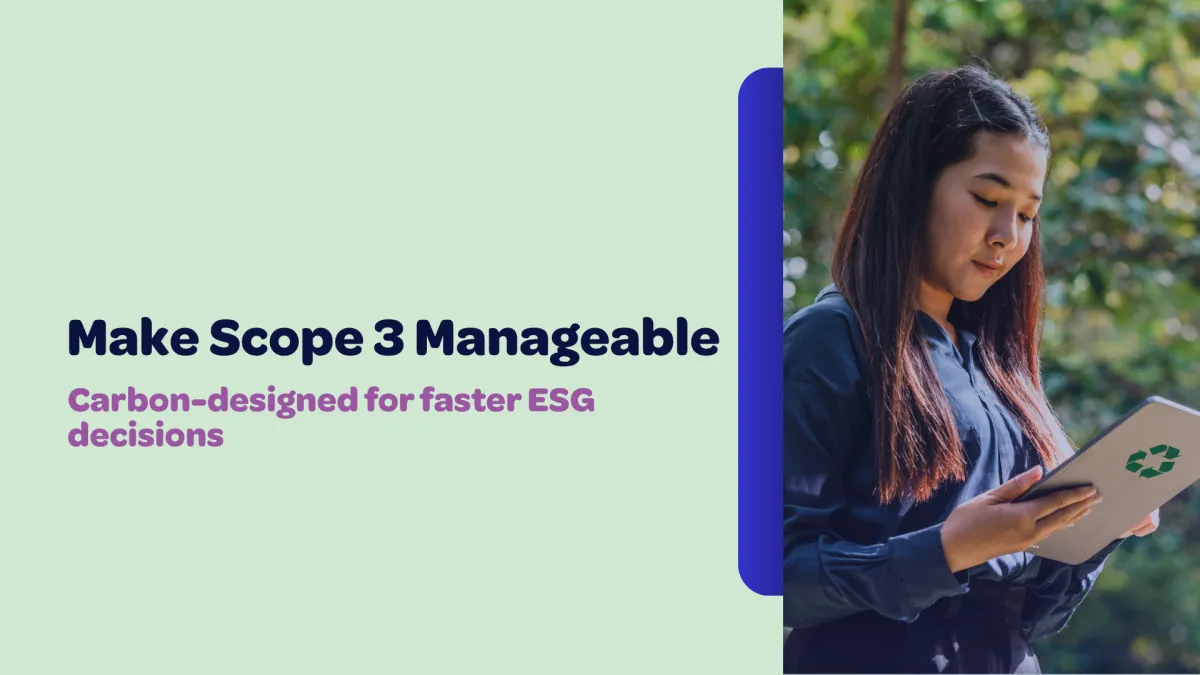
Following on from my previous post, here are some more of the recent and upcoming changes from IBM for Envizi. I said there were a lot before and this isn't even the end of it!
As we all know ESG isn’t just about capturing and reporting numbers — it’s about turning them into insights you can act on. That starts with a solid data foundation, and more importantly, an interface that brings together your many disconnected systems and workflows (I’ll explain why I’m leaning on the word ‘interface’ below).
The latest updates either in Envizi now or coming soon will help reshape how organisations manage Scope 3 emissions — the hardest and most complex area of ESG reporting. If you're already comfortable with Scope 1 and 2, these tools may help you close the most persistent gap in ESG: understanding and influencing emissions across your value chain.
1. Financed Emissions – Category 15, PCAF-Aligned
For financial institutions, Scope 3 Category 15 (financed emissions) has become a key metric. Envizi's new Financed Emissions Solution (which is in preview) enables users to:
- Calculate emissions from loans, investments, and insurance portfolios
- Use methodologies aligned with the Partnership for Carbon Accounting Financials (PCAF)
- Drill down into asset-level data for transparency and traceability
This gives banks, asset managers, and insurers more confidence in disclosure — and more leverage when it comes to portfolio decarbonisation. Importantly, it’s designed to handle sensitive financial data securely, while still enabling the granular analysis that auditors and regulators increasingly expect.
The Financed Emissions capability will be deployed as a dedicated module, that will integrate seamlessly into the core Envizi platform — making it accessible to ESG teams and finance functions responsible for Scope 3 Category 15.
2. Location-Based Emissions Factor Libraries
One size doesn’t fit all. Envizi will soon support emissions factors tailored by region, jurisdiction, or data source. This means:
- More accurate reporting for multinational operations
- Easier alignment with jurisdiction-specific frameworks like ASRS
- Fewer assumptions — and fewer assurance headaches
Users can also manage and apply custom emissions factors, tailored by geography, methodology, or data source. This offers a higher degree of control across jurisdictions — helping organisations report with greater precision while reducing the burden of manual overrides.
3. Virtual Meter Alerts
Coming soon, alerts will be able to be configured for virtual meters — helping surface anomalies before they become costly or skew reporting. This bridges the gap between operational monitoring and sustainability reporting, especially across decentralised infrastructure.
These alerts can use rules like absolute thresholds, variance detection, and performance trends — helping teams catch anomalies before they skew reporting or drive up energy costs. You’ll be able to run these checks daily or on demand, which is especially useful for distributed infrastructure.
4. A Better Experience with Carbon Design
This will be a big change for long-time Envizians. The upcoming UI refresh will likely be significant for those familiar with the "distinct" Envizi interface. For those more familiar with IBM’s Carbon Design System, this shift will make complex workflows easier and more intuitive. It includes:
- Cleaner layouts and guided workflows
- Accessible design for all user types
- Consistency across modules to reduce training overhead
User experience matters — especially when ESG teams are under pressure to deliver fast, reliable data. I imagine this will streamline the UI, but for those with muscle memory, I suspect there will be a few changes — ultimately for the better!
I’m expecting this to be a transitional refresh — a first wave of UI changes that will lay the groundwork for future feature rollouts. Based on the roadmap, the first phase is coming later in 2025, and I suspect we’ll see further refinements into 2026 as new workflows evolve.
Carbon is IBM’s open-source design system for products and digital experiences. (More on that in a future post.)
5. Supply Chain Intelligence Tools
Scope 3 Category 1 (Purchased Goods and Services) is one of the largest and most opaque emissions categories. New Envizi capabilities aim to make supplier engagement more actionable:
- Supplier survey templates and tracking
- Emissions hotspot dashboards
- Scenario modelling tools to test the impact of procurement changes
These tools reduce the traditional friction between sustainability and procurement teams — making it easier to identify high-impact suppliers, track progress, and model “what if” scenarios without needing a data science degree.
Final Thought
Scope 3 is where ESG reporting gets real. These features from IBM Envizi show a shift toward not just reporting emissions — but understanding, reducing, and owning them.
For organisations preparing for frameworks like ASRS, CSRD, or IFRS S2, these updates help lay the data foundation for credible, assured disclosure — and meaningful action.
I’ll be watching these features closely — especially how they help organisations move from “just reporting” to truly managing Scope 3.
If you're planning your next ESG system upgrade — or trying to align with ASRS — I’d love to hear how you're approaching Scope 3. Feel free to reach out or share your thoughts.

Michael Kasteel
Director - ESG & Industry Solutions